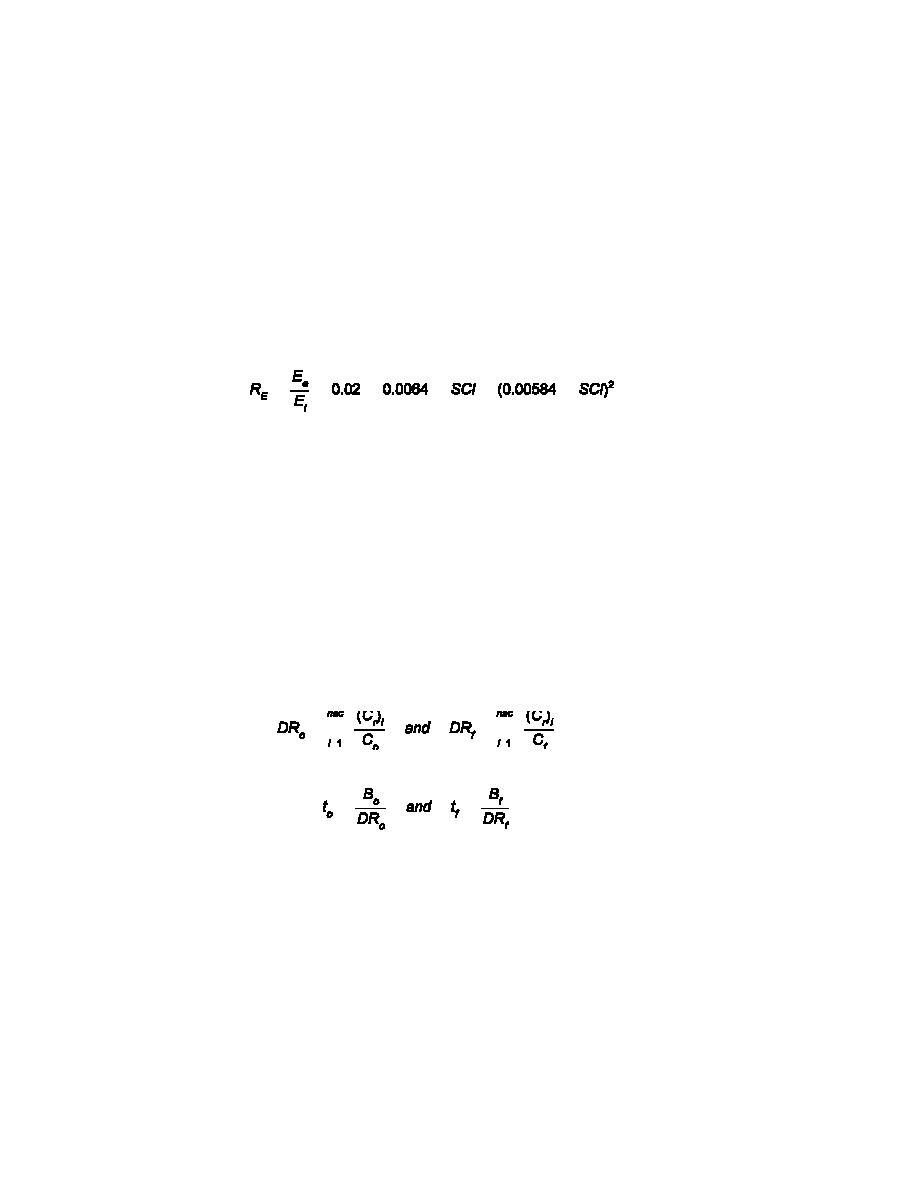
UFC 3-260-02
30 June 2001
(4) The interface condition between layers also needs to be determined. The condition of the
base slab at the time of the overlay determines the bonding condition used for the overlay. In general,
the interface between concrete and other materials is considered to be frictionless. A frictionless
interface may be attained by providing a bond breaker course between the overlay and the base
pavement. If special effort is taken to prepare the surface for complete bonding, then the interface is
considered to be fully bonded.
b. Base Slab Pavement Fatigue and Structural Condition. Traffic applied on the base slab before
the overlay is placed consumes some of its fatigue life. If it has begun to deteriorate from traffic, an SCI
can be determined from a pavement condition survey. The ratio between the effective modulus of
elasticity (Ee) and the initial undamaged modulus of elasticity (Ei) is determined by the relationship:
'
'
%
(
%
(
(19-4)
This equation is used to account for the deterioration of the base pavement with the application of traffic.
If the SCI of the base pavement is equal to 100, the amount of past traffic must be determined to
estimate the remaining fatigue life of the base slab.
c. Selection of Trial Thickness. The rigid overlay design procedure is an iterative process. A trial
overlay thickness is assumed, and its condition assessed in terms of the overlay life predicted for the
design SCI. If the predicted life is unacceptably low, then a thicker overlay thickness is assumed. If the
initial trial overlay thickness predicts a pavement life that is too high, then a thinner overlay is tried.
d. Base Slab Performance. The base pavement performance curve is determined by calculating the
damage rate at the time of initial cracking (DRo) and the damage rate at the time of complete failure
(DRf). Equations 19-1, 19-2, and 19-3 in conjunction with the following equations are used to compute
the damage rates.
'j
'j
(19-5)
'
'
'
'
(19-6)
where
Cr = design traffic rate, coverages per year
Cf = allowable coverage level at the time of complete failure (SCI = 0)
nac = number of aircraft
to, tf = time to initial cracking and time to complete failure, respectively
19-9



 Previous Page
Previous Page
